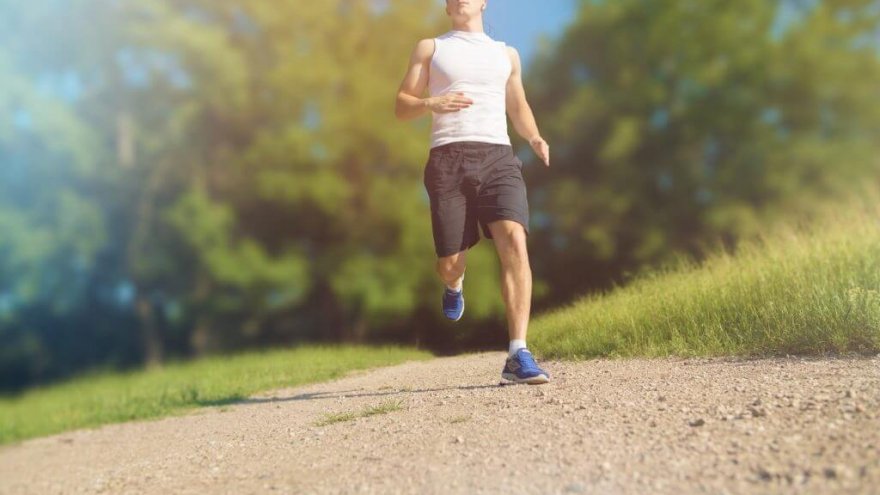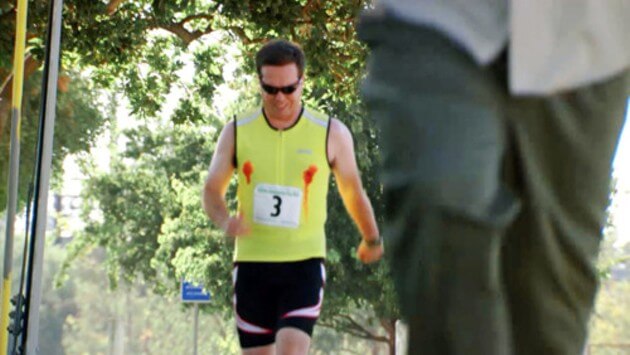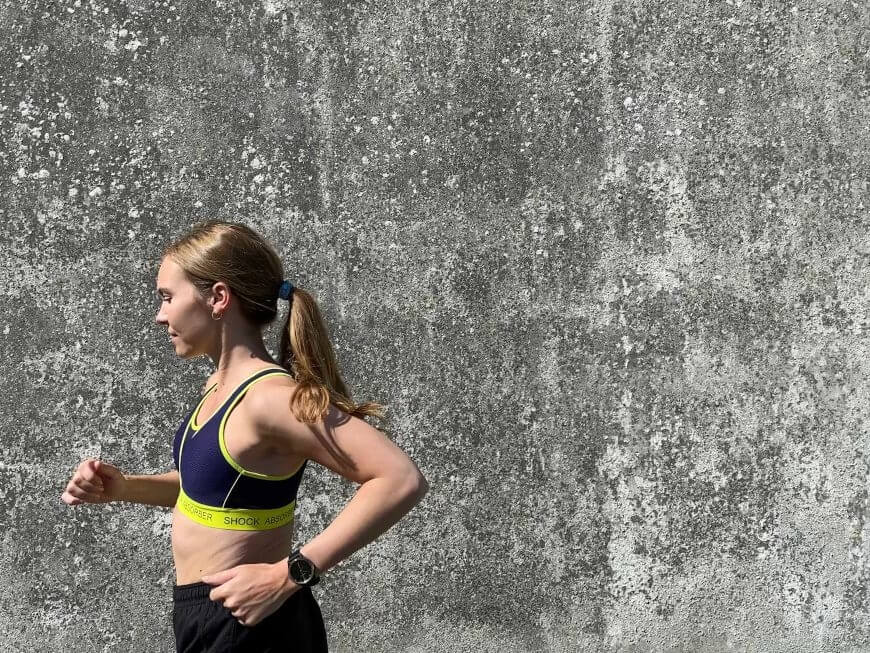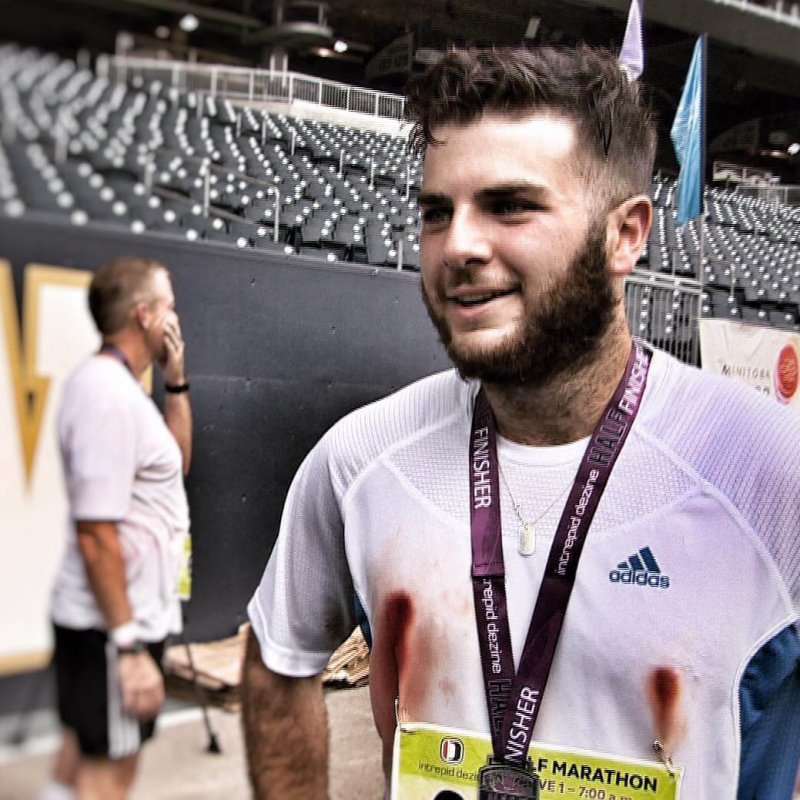Joggers Nipple: How To Treat & Prevent Nipple Chafing

Chaffing is common in many athletic activities. The constant rubbing of clothing or accessories on one’s skin is bound to cause problems.
But perhaps the most irritating is what’s commonly referred to as joggers nipple or runners nipple.
What Is Joggers Nipple?
Nipple chafing, often called jogger’s nipple, occurs when the nipples are irritated by rubbing clothing or bra. It is painful and common among runners. Preventative measures include, but are not limited to; bandaids, tapes, and anti-chafing products.

What often starts out as just a little bit of soreness, if you don’t heed the warning of joggers nipple, you could end up in much worse condition. Eventually, your nipple could end up red, raw, and even bleeding.
This ill fate can affect both men and women and it is far more common than we may think.
Does Running Make Your Nipples Bleed?
While running certainly does not make your nipples bleed, running without properly protecting all of your parts could result in injury.
Just like you would not go out for a run missing your socks or shoes, you should not even consider running without protecting those delicate parts of your breasts!
One of the most common fabrics to cause nipple chafing is cotton, but other fabrics can also be the culprit. What happens is your sensitive skin rubs against either your sports bra or t-shirt. This constant friction results in a problem in skin irritation on and around a very sensitive area.
NOTE: Runner’s nipple may occur more frequently in cold weather conditions due to the effects cold temperatures have on nipples.
How To Prevent Joggers Nipple
There are actually some easy ways to prevent runners nipple.
- For women, wearing the correct sports bra is crucial. It should fit properly. If you have too much room in the bra, it allows for unnecessary motion, resulting in chafing.
- Bandaids are a cheap, easy, and convenient tool many people use to protect their nipples from unnecessary rubbing.
- Tough strips are actually like a band-aid but much more durable. They are super sticky and can withstand large amounts of sweating. For some runners, that is an essential component!
- Nipple guards (otherwise known as “nip guards”) are adhesive pads used to protect the nipples.
- Adhesive Tapes, like surgical tape, is a very simple alternative most people will already have available in their homes.
- Lubricants such as Body Glide or Aquaphor are used to keep the fabric from uncomfortable rubbing. Here are our picks for the best anti-chaffing sticks and creams.
- Petroleum jelly or vaseline can be used in place of a runner-specific lubricant if you need something to protect yourself. In fact, you will often find this being handed out to runners at aid stations in marathons.
- Talcum powder can be dusted on before your run to help prevent chafe. It does work for some runners!
- Compression Vest’s may also be an easy way to prevent nipple chafing issues, all while giving you storage for your phone, wallet, keys, and water.
- Choose your fabric carefully! As stated previously, cotton shirts are the enemy. You should wear a running shirt made of synthetic materials, such as dry-fit performance clothing that has moisture-wicking characteristics. Having tested dozens of shirts, here are our picks for the best running shirts available today.
- Running shirtless may seem like a super obvious solution, but yet it needs to be said. Especially in hot weather, just skipping the shirt altogether could be a great way to prevent nipple chafing.
“I’m big into Band-Aids. Since I have young kids, they can get colorful. I only do that for races though, so occasionally I have had some painful midweek showers.” – Tim, RunnerClick Pro Member
Let’s Talk Proper Fitting Sport Bras
For those who are concerned that the chafe is a result of an ill-fitting sports bra, let’s cover that topic. First, consider how much support you need.
Especially if you have larger breasts, you need to ensure you have adequate support and control to minimize bounce and movement. You guessed it. Those two things can lead to chafe.
Next, you need to be sure your breasts are properly contained. Referred to as encapsulation, the style and fit of the bra are not only important, it is unique to individuals. You are probably not surprised to hear that a sports bra loved by one woman will not work for another.
“The title made my skin crawl. 🙀 I couldn’t imagine the feeling of nipple chafing and I hope it never happens to me! 🤞🏾” – Deidre, RunnerClick Pro Member

Sports bras should be breathable and have relatively wide straps. This helps to prevent chafe or straps from digging into your skin.
Lastly, when in the fitting room, do the jump test. To mimic movement, put the bra on and jump up and down. If the girls are jiggling or moving around too much, you likely won’t have a proper fit.
How To Treat Chafed Nipples?
What happens if, despite your best efforts at prevention, you end up with chafed nipples. Now, what should you do?
First, as soon as you get back from your run and suspect chafe, clean it carefully. This should be done with very mild soap and warm water, wiping very gently to avoid more discomfort.
If your nipples are swollen and/or inflamed, you may want to try some hydrocortisone cream or other antibiotic ointments to help alleviate this problem. If they are red and open, you may even need an antibiotic cream.

You may need to take some time off of running while you heal. In fact, simply thinking about running may cause you discomfort! For certain, if you think you can run through healing, be sure to take preventative measures.
Cover the chafed area with a lubricant and some kind of bandage to prevent further injury.
“I have returned from a run with sore nipples and a blood-stained shirt having forgotten to prepare beforehand. I lean toward Body Glide since adhesive tape and hairy chests don’t mix well.” – Jay, RunnerClick Pro Member
How Long Does Joggers Nipple Take To Heal?
Runner’s nipple can take as little as a few days, or even a few weeks to heal properly.
Healing time is dependent upon how severe the irritation or bleeding is and how focused you are on treating the affected area.
It’s important to be patient to ensure joggers nipple has the necessary time to heal.
Shower Alert!
If you have never had a chafe in a sensitive area or joggers nipples, this warning is for you. When you finish your run and peel off your clothing, we all know that a hot shower is the best feeling in the world. However, be warned.
When you have a chafe, especially if it is to the point of being raw, the hot shower will be your new, worse enemy. So although it is important to clean the impacted area, you should do this in a gentle, lukewarm stream. NOT in a super hot shower!
Save the hot shower for other parts of your body and keep the chafed area protected from the stream!
Be Smart!
If having a runner or jogger’s nipple sounds painful and yucky, it’s because it is. Just remember that this does not have to happen to you. All you have to do is make some smart choices before you even step out of your house to run!
Investing in quality running clothing, using lubricants, and using some kind of nipple cover if you are prone to this problem are three things you can easily implement to keep your tender parts safe and happy!
Latest Articles
 Is Running on a Treadmill Easier Than Running Outside?Runners have their own preferences, whether it is treadmill running, running outside on the road, or exploring trails. So...
Is Running on a Treadmill Easier Than Running Outside?Runners have their own preferences, whether it is treadmill running, running outside on the road, or exploring trails. So... Is It OK to Use Trail Running Shoes on the Road?While trail running shoes can be used on roads, especially in situations where a runner encounters mixed terrains or pref...
Is It OK to Use Trail Running Shoes on the Road?While trail running shoes can be used on roads, especially in situations where a runner encounters mixed terrains or pref... How to Fix Sore Quads After Running?Rest, ice, gentle stretching, and over-the-counter pain relievers can help soothe sore quads after running. Also, ensure ...
How to Fix Sore Quads After Running?Rest, ice, gentle stretching, and over-the-counter pain relievers can help soothe sore quads after running. Also, ensure ... 10 Fruits With The Most Electrolytes to Replace Sports DrinksThese fruits are high in electrolytes such as potassium, magnesium, and calcium, essential for hydration, muscle function...
10 Fruits With The Most Electrolytes to Replace Sports DrinksThese fruits are high in electrolytes such as potassium, magnesium, and calcium, essential for hydration, muscle function...

